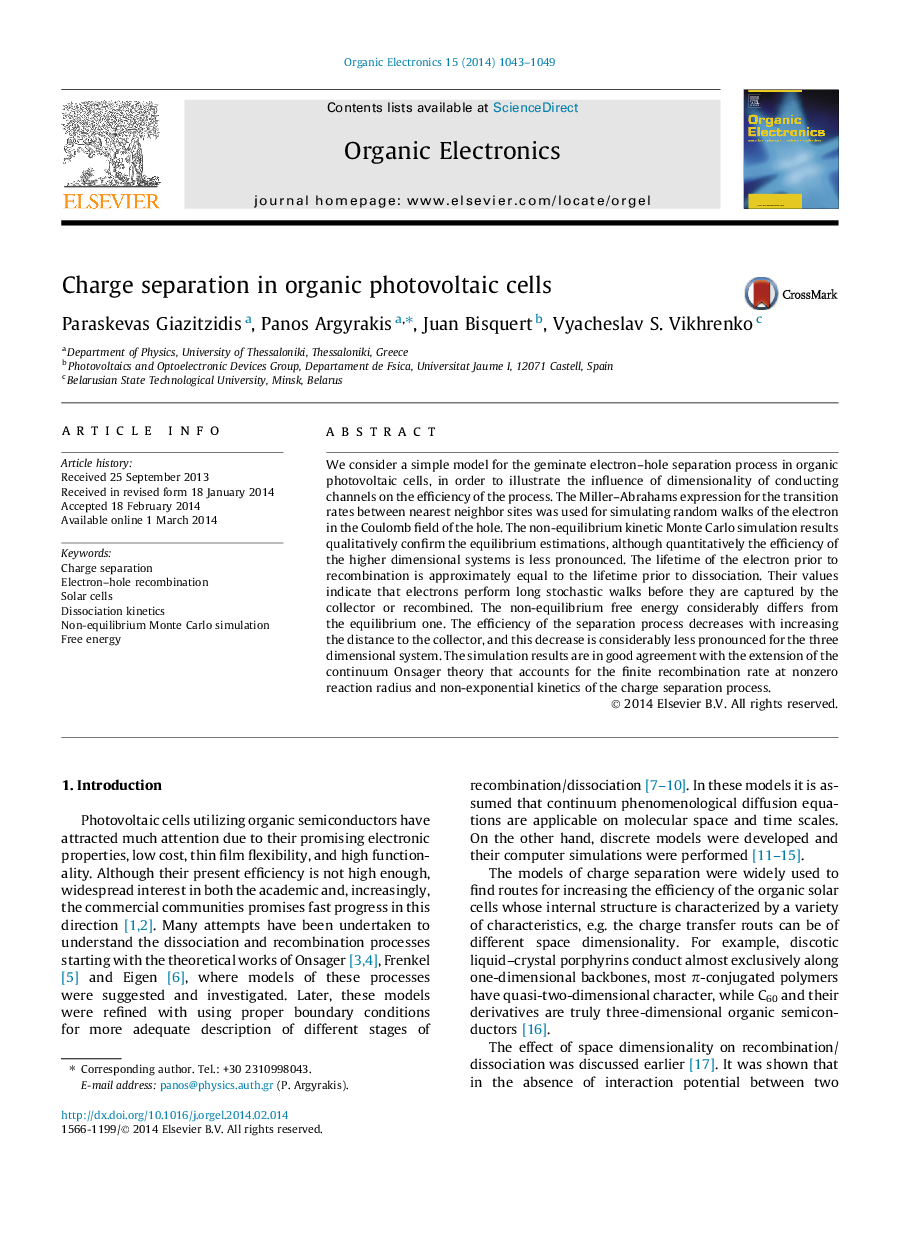| Article ID | Journal | Published Year | Pages | File Type |
|---|---|---|---|---|
| 10566047 | Organic Electronics | 2014 | 7 Pages |
Abstract
We consider a simple model for the geminate electron-hole separation process in organic photovoltaic cells, in order to illustrate the influence of dimensionality of conducting channels on the efficiency of the process. The Miller-Abrahams expression for the transition rates between nearest neighbor sites was used for simulating random walks of the electron in the Coulomb field of the hole. The non-equilibrium kinetic Monte Carlo simulation results qualitatively confirm the equilibrium estimations, although quantitatively the efficiency of the higher dimensional systems is less pronounced. The lifetime of the electron prior to recombination is approximately equal to the lifetime prior to dissociation. Their values indicate that electrons perform long stochastic walks before they are captured by the collector or recombined. The non-equilibrium free energy considerably differs from the equilibrium one. The efficiency of the separation process decreases with increasing the distance to the collector, and this decrease is considerably less pronounced for the three dimensional system. The simulation results are in good agreement with the extension of the continuum Onsager theory that accounts for the finite recombination rate at nonzero reaction radius and non-exponential kinetics of the charge separation process.
Related Topics
Physical Sciences and Engineering
Chemistry
Chemistry (General)
Authors
Paraskevas Giazitzidis, Panos Argyrakis, Juan Bisquert, Vyacheslav S. Vikhrenko,
